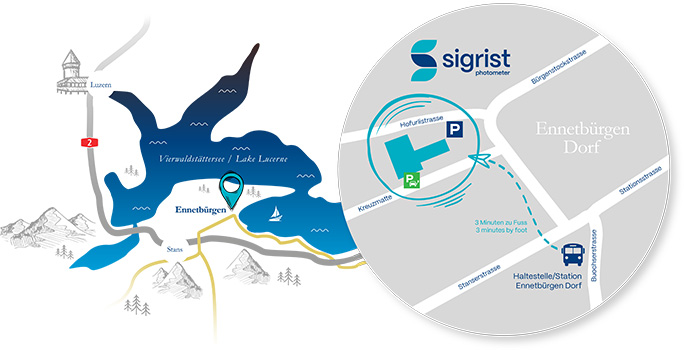
Fig. 12: Drinking water treatment
| 1 |
Turbidity in raw water |
15 |
Ozone in air or oxygen (O2) |
| 2 |
SAK 254 (UV absorption) in raw water |
16 |
SAK 254(UV absorption) after activated carbon |
| 3 |
Colour (Hazen) of raw water |
17 |
Turbidity before disinfection |
| 4 |
Oil traces (HC) in raw water |
18 |
Concentration of chlorine dioxide (ClO2) |
| 5 |
Turbidity for dosing flocculant |
19 |
Turbidity in treated water |
| 6 |
SAK 254 (UV absorption) in raw water |
20 |
SAK 254 (UV absorption) in treated water |
| 7 |
Colour (Hazen) of raw water |
21 |
pH value in raw water / treated water |
| 8 |
Turbidity after rapid filtration |
22 |
Conductivity in raw water / treated water |
| 9 |
Turbidity after filter back wash |
23 |
Redox potential in raw water / treated water |
| 10 |
Turbidity before ultra or membrane filtration |
| 11 |
Turbidity after ultra or membrane filtration |
24 |
Dissolved oxygen in raw water / treated water |
| 12 |
Turbidity after sand filter |
| 13 |
Turbidity after filter back wash |
25 |
Concentration of free chlorine, chlorine dioxide (ClO2) and ozone (O3) in water |
| 14 |
Ozone generator monitoring |
All three measuring principles applied by SIGRIST are used in the treatment of drinking water:
turbidity, absorption and fluorescence
The criteria of interest for a given raw water depends on its origin. In the case of surface water, the turbidity value is used to control the amount of flocculent added. Where spring water is tapped, the turbidity and oil trace measurements decide whether the water will be used or discarded. In addition to solids, dissolved organic carbon can be present and can be measured with SAK (UV 254 nm absorption). Any yellow coloration in the raw water is determined by absorption measurement. Generally around 380-430 nm to suit local requirements.
In the case of raw water laden with impurities, flocculation/sedimentation is the crucial treatment step for eliminating solids. So the turbidimeter operating between the settling tank and sand filtration is a key contributor to optimal plant operation.
At the sand and membrane filters, turbidity measurement not only monitors the filtration step, but also helps optimize the sand cleaning process.
Finally, UV absorption measurement handles several different functions. It is used following the ozone generators to check the concentration of the generated ozone in the gas phase and following the residual ozone decomposer to detect the residual content (ozone measurement). At the outlet of the activated carbon filters and prior to the sterilization by UV-radiation and disinfectants, turbidity and the SAK/DOC value is monitored. Before the water is fed into the water network, turbidity, the SAK/DOC value, the disinfectant and the pH value are again monitored. The border between them is fuzzy and varies depending on which author you read.

